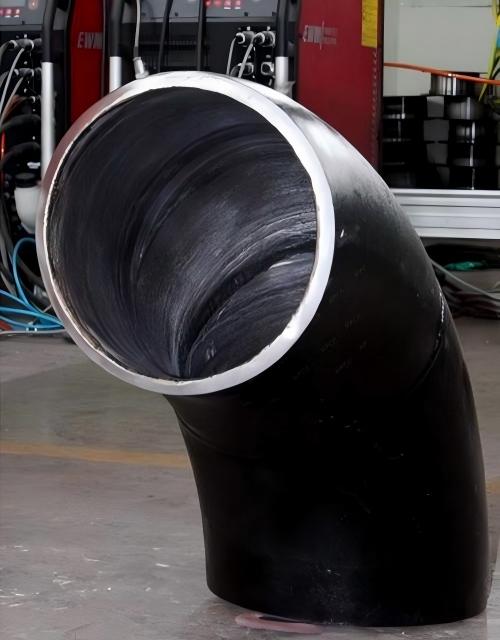Understanding the Composition of Metal Matrix Composites (MMCs)
Metal Matrix Composites (MMCs) represent a new generation of high-performance materials that combine the toughness of metals with the strength and stiffness of reinforcement phases. By integrating metallic or non-metallic reinforcements into a metal or alloy matrix, MMCs achieve mechanical and thermal properties that surpass those of conventional materials.
The design philosophy behind MMCs lies in property complementarity—the matrix provides ductility and processability, while the reinforcement enhances strength, stiffness, and thermal resistance. This synergy results in outstanding performance even under extreme working conditions.

Weld overlay elbow fitting used in high-temperature steam pipeline system
Matrix Materials in MMCs
The metal matrix acts as the continuous phase that binds the composite together. It determines key properties such as toughness, ductility, and thermal or electrical conductivity. Depending on application requirements, different types of matrices are used:
- Light metal matrices: Aluminum, magnesium, and titanium alloys — widely used in aerospace and automotive industries for lightweight structural components.
- High-temperature metal matrices: Nickel, copper, iron, and cobalt-based alloys — suitable for engine parts and thermal systems operating in high-temperature environments.
These matrix materials provide the essential foundation for combining mechanical strength with functional versatility.
Reinforcement Types and Their Roles
The reinforcement phase is the strengthening element that defines the enhanced mechanical behavior of MMCs. Common reinforcement forms include:
- Continuous fibers (e.g., carbon fiber, silicon carbide fiber): Deliver exceptional unidirectional strength and stiffness.
- Short fibers or whiskers (e.g., SiC whiskers, alumina short fibers): Improve multidirectional properties and fracture toughness.
- Particles (e.g., silicon carbide, alumina): Offer isotropic reinforcement, providing uniform strength and wear resistance in all directions.
By selecting appropriate reinforcement materials and geometries, engineers can precisely tailor MMC performance for specific applications.
Advantages of Metal Matrix Composites
The combination of metallic matrices and reinforcing elements gives MMCs several distinctive advantages:
- High specific strength and stiffness – Delivering excellent strength-to-weight ratios.
- Superior high-temperature resistance – Retaining structural integrity in demanding thermal conditions.
- Enhanced wear resistance – Ideal for abrasive or high-friction environments.
- Excellent dimensional stability – Reducing deformation under load or temperature fluctuations.
- Customizable performance – Material properties can be tailored through matrix-reinforcement design and process optimization.
These benefits make MMCs a preferred choice for high-performance engineering components.
Industrial Applications of MMCs
With their unique balance of strength, heat resistance, and lightweight properties, metal matrix composites are increasingly used in advanced industries:
- Aerospace and aviation: Structural parts, turbine blades, and engine components.
- Automotive industry: Brake discs, pistons, and other wear-resistant components.
- Electronics and power systems: Thermal management and packaging materials.
- Sports and industrial equipment: Components requiring high stiffness and precision stability.
As a material technology innovator, FNS Pipeline Technology Co., Ltd. continues to explore advanced MMC applications to support customers in achieving longer service life, higher efficiency, and enhanced reliability in their products.
Metal matrix composites combine the best of both metallic and ceramic worlds. Through optimized material selection and advanced processing techniques, MMCs enable lightweight strength, thermal efficiency, and durability that redefine performance standards across multiple industries.


